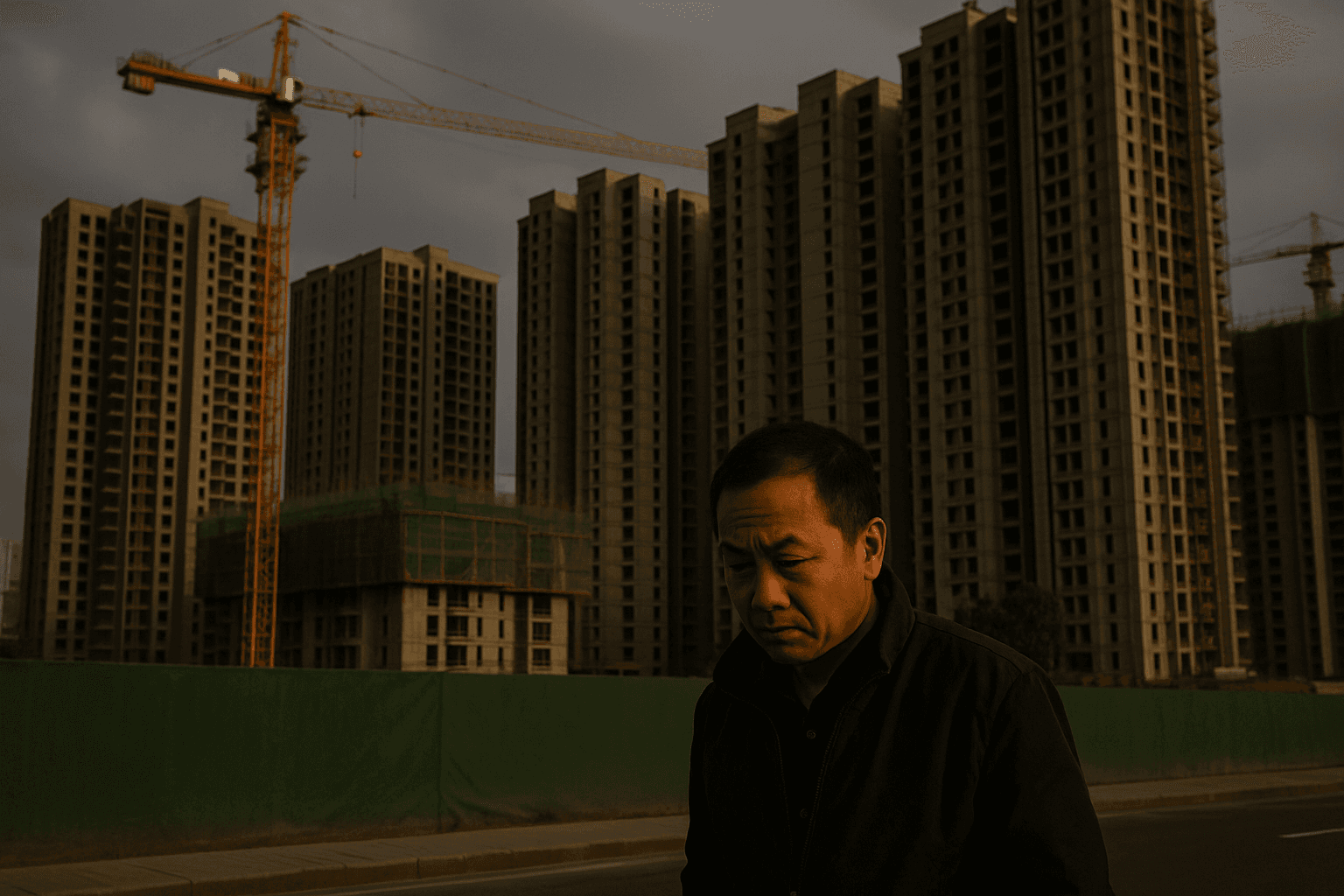China property strains return as Vanke credit plunges, testing policy support
State backed developer China Vanke sees its dollar bonds and onshore notes slide into distress, refocusing investor attention on the country wide property slowdown and its systemic risks. The episode matters because real estate and related industries account for roughly a quarter of China’s economy, and renewed stress could pressure regional banks, local government finances and global risk appetite.

China Vanke’s credit instruments plunged deeper into distress on Wednesday, reigniting market concern about the stability of China’s property sector and the clarity of government support. Bloomberg reports that both Vanke dollar bonds and onshore notes traded sharply lower this week, with some paper reaching distressed levels, a move that market participants described as a bellwether for broader developer credit risk.
The fresh downdraft follows years of strain in the sector as developers have grappled with heavy debt loads, weaker home sales and tighter financing conditions. Vanke, long viewed as one of the more stable and state linked firms, is closely watched because trouble at the company would signal that even relatively well capitalized issuers are vulnerable without clearer policy backstops. Investors are now recalibrating the probability that Vanke can avoid defaults absent concrete government measures to shore up liquidity or backstop repayments.
The implications extend beyond one issuer. Real estate and construction and related services are estimated to account for roughly one quarter of China’s GDP when direct and indirect links are included. Developers account for a large share of corporate credit demand, while local government finances have for years relied on land sales and property related fees as major revenue sources. A deeper property slump therefore risks amplifying stress through regional banks that hold concentrated real estate exposures and through local government budgets that could see revenue from land transactions evaporate.
Market transmission is already visible. Credit spreads on some developer bonds widened as investors reassessed recoveries, and risk sentiment in Asian credit and equity markets softened. Global investors monitor these dynamics closely because a sharp deterioration in China property could dent commodity demand, weigh on global growth expectations, and prompt reassessments of exposures to emerging markets.

Policymakers face a difficult trade off. On one hand, aggressive support would limit near term financial spillovers and calm markets. On the other hand, open ended rescues would risk reinforcing incentives for leverage and delay necessary restructuring of an overbuilt sector. Historically, authorities have combined targeted liquidity measures with regulatory nudges to stabilize markets, but market participants now say signals need to be clearer and quicker to prevent a wider panic.
For long term trends, the Vanke episode highlights how China’s property market is transitioning from an era of rapid expansion to one driven by deleveraging and restructuring. Developers must adapt to a landscape of slower sales, more cautious financing, and heightened scrutiny of balance sheets. How Beijing and local governments respond will shape not only the near term path of credit markets and bank balance sheets, but also the pace of economic rebalancing away from investment heavy growth toward consumption led expansion.
Investors and policy makers will watch upcoming liquidity flows, any changes in regulatory stance, and company specific funding developments for signs of whether the turmoil in Vanke’s paper is an isolated shock or the start of renewed systemic pressure.


